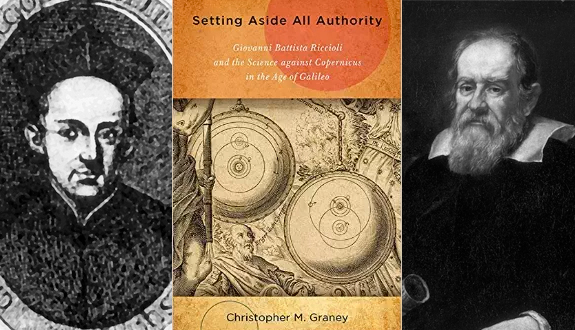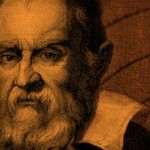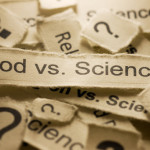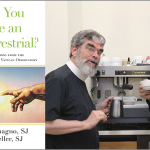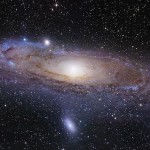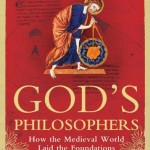Galileo was Right—But So Were His Critics
by Carl Olson
Filed under Christianity and Science, Galileo, Interviews
Ever since the seventeenth century, the celebrated “Galileo affair” has been one of the featured items on the list of dark moments in the history of Catholicism. That the Church mistreated the Italian astronomer—or at least misjudged his claims concerning the structure of the solar system—seems clear. Pope John Paul II, for example, apologized for the Church’s condemnation of Galileo in 1992. No one now disputes the fact that the earth revolves around the sun rather than the other way around.
For anti-Catholic historians and polemicists the episode is but the most obvious instance of the supposedly perennial conflict between religion—often enough Catholicism specifically—and science. The seventeenth-century battle, in the conventional view, pitted clergymen, who relied on revelation, against scientists, who relied on empirical observation.
But what if this typical portrayal of the heliocentric debate is almost entirely wrong?
That’s the claim of Dr. Christopher M. Graney in Setting Aside All Authority: Giovanni Battista Riccioli and the Science against Copernicus in the Age of Galileo (University of Notre Dame Press, 2015). Graney, professor of physics at Jefferson Community and Technical College in Louisville, Kentucky, credits a question from one of his students with propelling him into an exploration of the history of heliocentrism and its skeptics. He corresponded recently about his surprising findings.
CARL OLSON: One of the blurbs on the back cover calls it “the most exciting history of science book so far this century.” I took that as hyperbole—until I read the book. It has the potential to overturn some important and entrenched narratives in the history of the relation between science and religion. To understand how, we need to know a little bit about the central character, Giovanni Battista Riccioli, whom you seem determined to rescue from obscurity. Who was he and why is he important?
DR. CHRISTOPHER M. GRANEY: Your comment about obscurity reminds me of my wife dubbing me “Riccioli’s agent.” He was an Italian Jesuit priest who worked in Bologna. He was born at the turn of the seventeenth century, so he was a very young man when Galileo was making big discoveries with the telescope in the 1610’s. Riccioli was bitten by the science bug, and eventually obtained permission from his superiors to devote time to science. He did a lot of physics experiments, including some of the first experiments to precisely study gravity. His results were quite good (he was very “detail oriented,” maybe to the point of being a little obsessive about it). He made a lot of astronomical observations with the telescope; he and his fellow Jesuit Francesco Maria Grimaldi gave the features on the moon the names we use today. Readers may recall that Apollo 11 landed in an area on the moon called “Tranquility.” Riccioli gave it that name. He wrote a huge book on physics and astronomy, called the New Almagest, published in 1651, that became a standard reference book. He was a prominent opponent of the heliocentric theory and was well-known in his time.
CARL OLSON: One of your main contentions is that even though in the long run Copernicus would be proven right by science, considering what was known at the time Riccioli actually had the stronger scientific case. Can you describe some of the problems that heliocentric theorists in the early seventeenth century had no good answer for?
GRANEY: There were two main problems. They take some space to explain fully, as I do in the book, but in short, one problem was Earth’s rotation in the heliocentric system. Fathers Riccioli and Grimaldi figured out that projectiles such as cannon balls should be affected by Earth’s rotation. Today we know that they were right. The effect is called the Coriolis Effect, and it is part of the reason why weather patterns rotate around a “high” or “low.” But it is a subtle thing, and at the time it had not yet been discovered. So Riccioli said that since the effect was not there, the Earth could not be rotating and heliocentrism must be wrong.
The other problem was star sizes. Heliocentrism required the stars to be huge—to utterly dwarf the sun. Today we know that stars come in many sizes: some do dwarf the sun, but many others are similar to the sun in size, and actually most are “red dwarfs” and smaller than the sun. But as I explain in the book, heliocentrism seemed to require every last star to dwarf the sun. Riccioli (and others) thought this was nuts. By contrast, in a geocentric universe everything fit neatly into a consistent size range, with the moon being the smallest and the sun the largest. That seemed much more reasonable.
Interestingly, many heliocentrists didn’t try to argue about the star sizes. They just said, “Hey, God can make huge stars.” One fairly prominent heliocentrist even explained that the stars were so huge because they were God’s warriors—the guards at the gates of heaven. He backed this up with scripture. Riccioli basically said, “Well, no one can deny the power of God, but this idea won’t satisfy prudent people.” It took a long time for scientists to discover that the apparent size of the stars is false, and stars are not all so huge. Explaining why that is takes up quite a few pages in the book.
CARL OLSON: The most stunning passage in the book (p. 104) is where you cite a series of quotations from scientists and historians, ranging from the early nineteenth century to the early twenty-first century. All accuse Riccioli of excessive reliance on theology and imply that Galileo and the other champions of the Copernican revolution had science on their side. In light of the evidence you’ve produced in this book, it hardly seems possible that so many authorities could be so wrong. How could such an erroneous view be so widespread and so durable?
Graney: That’s a great question. I don’t know the answer. This stuff was not hidden away—Riccioli’s New Almagest is old, and rare, but not that rare, and it was well known in its day. Many copies exist today in libraries and private collections. Other people of that time also wrote about the star size problem (like Tycho Brahe, a very prominent astronomer) and their books are available, too. Moreover, in at least the early nineteenth century you could find the scientific case against heliocentrism, namely the star-size problem, being mentioned even in an encyclopedia article. So the information is in libraries, and it used to be at least somewhat broadly known. I find it particularly weird that the Catholic world forgot this history: prominent work, done by one of its own, that has a bearing on one of (to use your words) the dark moments in the history of Catholicism.
CARL OLSON: The story of the heliocentric debate, you conclude later in the book (p. 145), “does not look so much like a morality play about brave reason and villainous superstition, about ‘science vs. religion,’ as it looks like a battle between two scientific theories, about ‘science vs. science,’ with a little ‘religion vs. religion’ thrown in as well.” Are you optimistic that your book will significantly change the common historical view of the Copernican Revolution? Or popular perceptions concerning the incompatibility of Christianity and science? How do you expect the book to be received?
Graney: Historians of science have been saying for a while now that the heliocentric debate was not like the common or popular perception of it, but that perception still sticks around. Everyone likes a “good guy/bad guy” story more than a story about the scientific process at work! So I’m not expecting much there, unless it comes from the science world, which has been very receptive to Riccioli and the star size problem.
It’s hard to predict how the book will be received, but the science world has been very receptive toward this general topic. Physics Today and Scientific American both published articles I wrote on Riccioli. Nature twice featured the star size problem prominently on their web page. It may be that scientists sense a particular relevancy in this story. Today rejection of science is a growing problem, as recently was brought to attention through a measles outbreak.
People have this image of science as an endeavor in which powerful forces cover up the truth for their own agenda. The stereotypical “Galileo Affair” story feeds that image, to science’s detriment. But the nature of science is actually such that it is hard to cover up truth, because different people get interested in a problem and start attacking it from different angles. Riccioli’s work and the star size problem tell us that what was going on in the seventeenth century was not the brave and reasonable Copernicans against powerful forces arrayed to cover up the truth, so much as it was the scientific process at work: a vigorous debate, with good arguments and careful observations on both sides, as each worked to figure out what the truth was.
So if this book does change broader perceptions, I think it will be because what it has to say about science at work could have some broader appeal in the science world.
Related Posts
Note: Our goal is to cultivate serious and respectful dialogue. While it's OK to disagree—even encouraged!—any snarky, offensive, or off-topic comments will be deleted. Before commenting please read the Commenting Rules and Tips. If you're having trouble commenting, read the Commenting Instructions.




